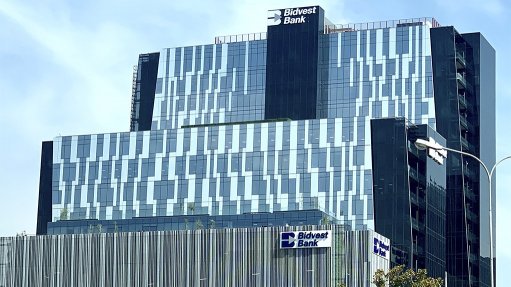
PRETTY LADY The A2 cladding on the Katherine towers is not only aesthetically pleasing but also noncombustible
South African steel supplier Stalcor has successfully negotiated to supply its Alubond mineral core (A2) noncombustible façade cladding panels for State-owned Airports Company South Africa’s Western Precinct development, which is currently under way.
“This is the fourth notable project where the noncombustible A2 Aluminium Composite panels will be used since its introduction to the South African market,” says Stalcor aluminium composite solutions product manager Robin Hide.
The first and second projects entailed cladding the Katherine Towers, in Sandton, as well as cladding the recently completed Deloitte building at Waterfall Park, in Midrand, both in Gauteng.
Alubond, a noncomposite panel manufactured in Dubai under licence to fire-rated US- based metal composites manufacturer Alubond, is distributed to South Africa and sub-Saharan Africa through Stalcor.
Stalcor Façade’s largest project to date – in relation to the supply of the new A2 cladding – has been the Deloitte Head Office installation, highlights Hide. Stalcor imported and supplied 6 200 m2 of the A2 cladding from Dubai to cladding installer Façade Solutions based in Benrose.
“The Katherine Towers project was the first time that A2 panels were used in South Africa, and opened channels for using the noncombustible façade panels,” adds Hide.
He alludes that the need for fire retardant or noncombustible facades has come to the fore after the fires that swept through the Address Hotel, in Dubai, and the residential Grenfell tower, in England. Both buildings were clad with older cladding products, which generally contain a plastic core.
“A plastic core is exceptionally flammable and offers little or no flame protection,” explains Hide.
Subsequently, many manufacturers in the façade sector considered improving fire retardation and heat retention. The first upgraded version of the compound found in cladding – the Euro Class B1 cladding – offered increased protection, with an average flame penetration time of about 18 minutes.
The newest rated cladding – the A2 noncombustible façade cladding panel – further improves the penetration time to about 30 minutes. “This allows for fire suppression systems and enables firefighting personnel to adequately address the threat and keep it contained,” boasts Hide.
The new A2 panels comprise a top skin, generally the aesthetic side of the panel, bonded to the mineral core using a layer of adhesive followed by the second or bottom skin with a primer or service coating which completes the panels.
The cladding offers advantages such as being lightweight, sturdy and highly malleable allowing for intricate design and shaping versatility. The cladding combines weather resistance with high acoustic-, thermal- and fire-rated values, and is available in an extensive choice of finishes.